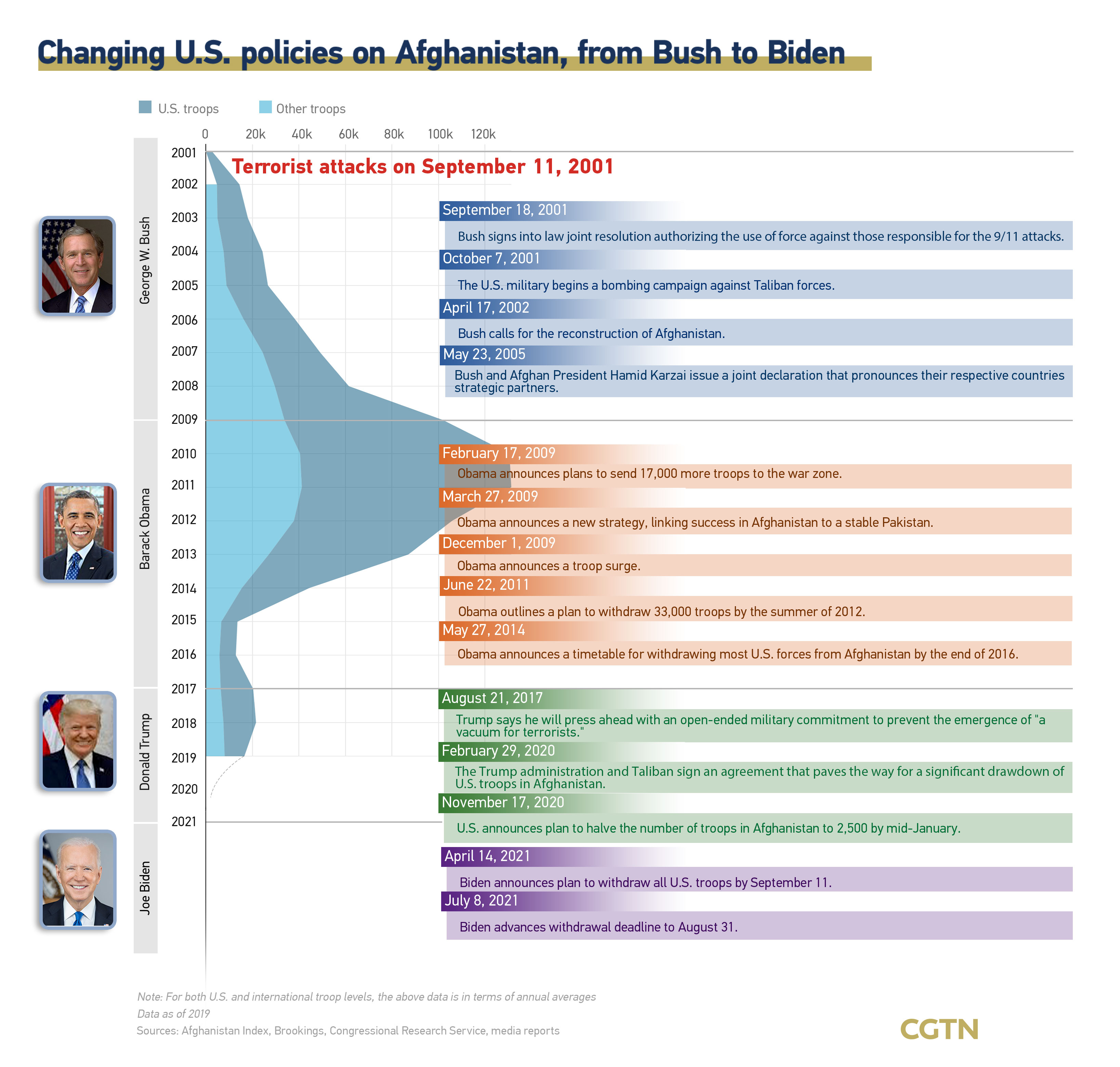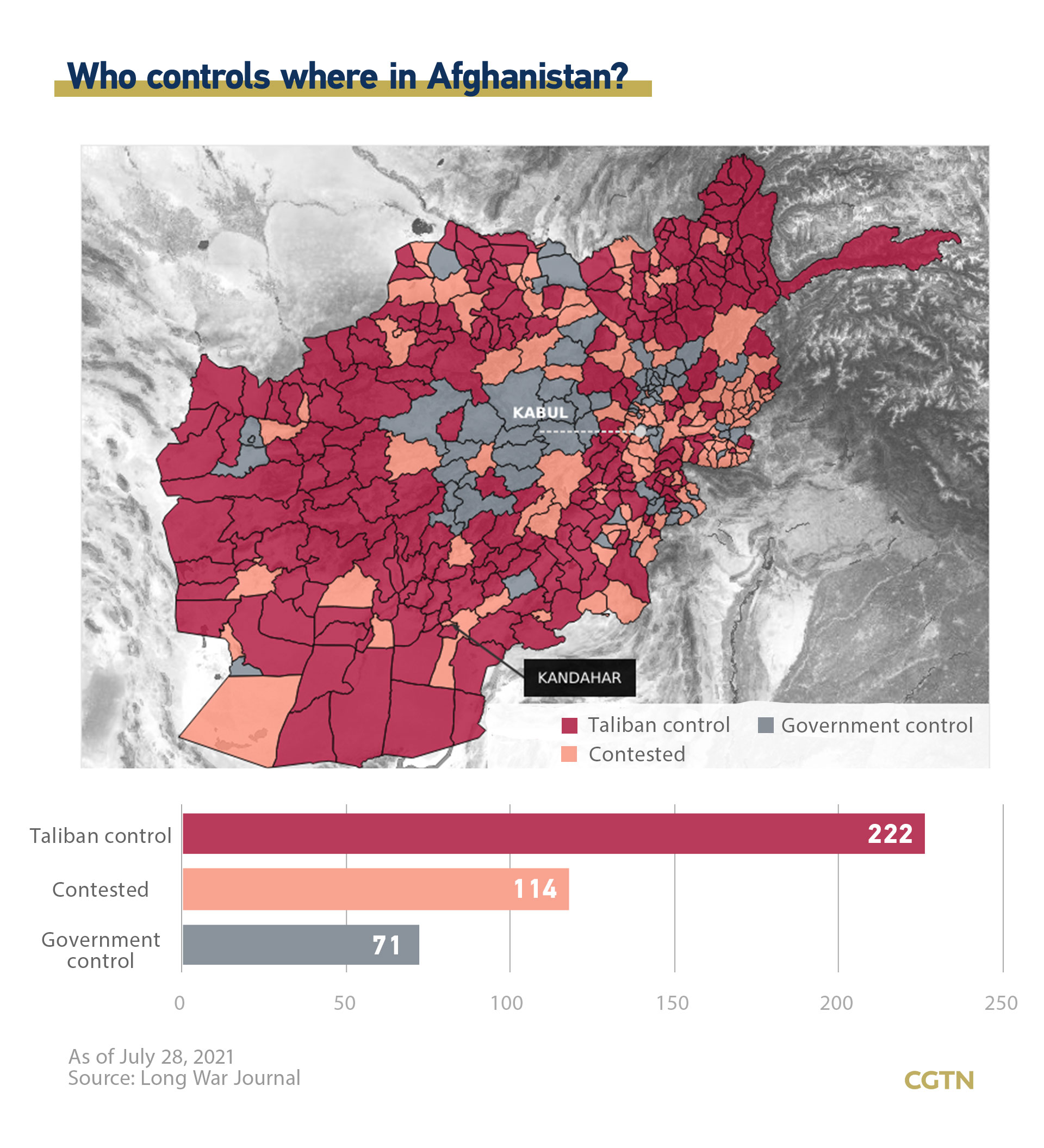The U.S. forces will withdraw from Afghanistan by August 31, ending America's longest war that has spanned through the administrations of four presidents, George W. Bush, Barack Obama, Donald Trump and Joe Biden.
Over the past two decades, the U.S. and its NATO allies have deployed hundreds of thousands of troops in Afghanistan. The defense department data show at one point, 98,000 U.S. troops and more than 130,000 soldiers from 50 NATO and partner nations were deployed in the country. The war has cost the lives of more than 2,400 American troops, and the number of Afghan troop fatalities, on the other hand, is much higher, with the death toll estimated to have reached over 71,800 since 2007. And the military expenses from 2001 have exceeded $2.26 trillion.
Here is a look back at the U.S. policies toward Afghanistan over the past 19 years.

In launching a global war on terror in the aftermath of terrorist attacks on September 11, 2001, President Bush declared: "We will make no distinctions between those who planned these acts and those who harbor them."
In April 2002, Bush expanded U.S. war aims in Afghanistan, as he called for the reconstruction of an Afghanistan that is free from the Taliban. The U.S. Congress appropriates over $38 billion in humanitarian and reconstruction assistance to Afghanistan from 2001 to 2009.
In December 2009, President Obama announced a troop surge, with 30,000 more U.S. troops to Afghanistan.
In 2010, the American military presence in Afghanistan peaked at about 100,000 troops.
On May 1, 2011, U.S. Special Forces killed Osama bin Laden during a raid in Pakistan. Later that year, Obama ordered a partial staged withdrawal of U.S. troops.
In September 2017, Trump announced the U.S. troop presence will increase by several thousand.
"Conditions on the ground, not arbitrary timetables, will guide our strategy from now on," Trump said.
In September 2019, Trump abruptly breaks off peace talks a week after U.S. negotiator announced that an agreement had been reached "in principle" with Taliban leaders.
President Biden takes office in January, promising to withdraw the remaining 2,500 American troops but warning that Trump's May 1 deadline may be difficult to maintain.
Biden, on April 14, announced that he plans to pull all American troops from Afghanistan by September 11 at the latest. Later in July, he said that the U.S. military mission there will conclude on August 31.
"We did not go to Afghanistan to nation build," Biden said in a speech at the White House. "It's the right and the responsibility of the Afghan people alone to decide their future and how they want to run their country."

The Taliban have captured more territory in Afghanistan in recent weeks at a time when U.S. troops continued to pull out of the country.
Read more:
Graphics: What you should know about U.S. troop withdrawals from Afghanistan

